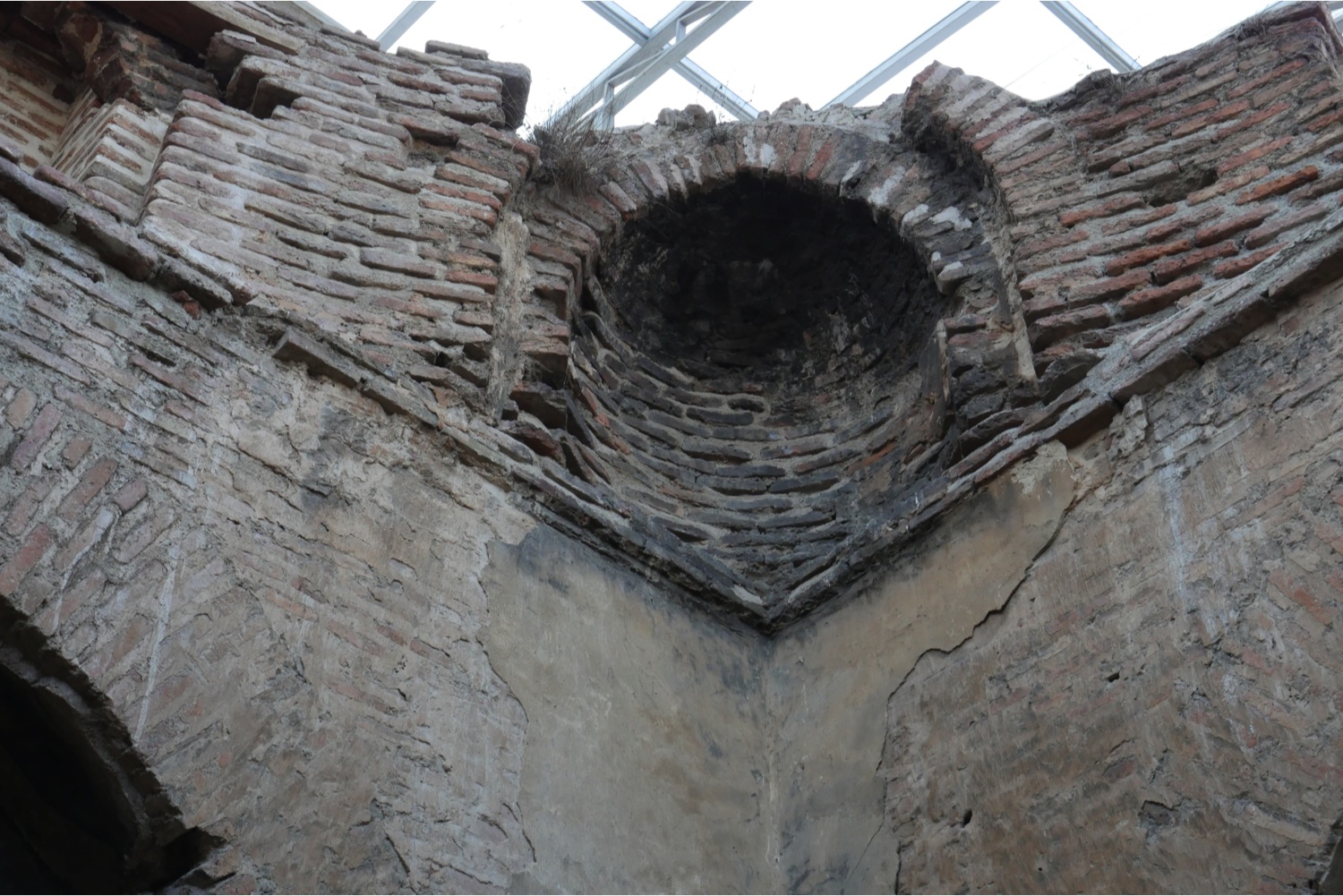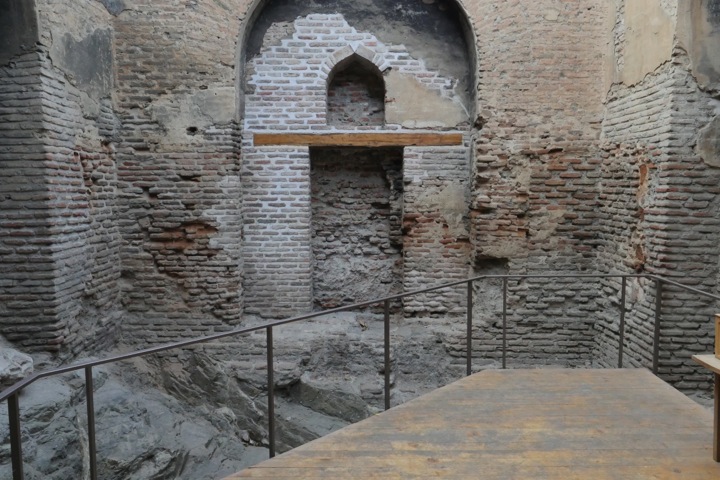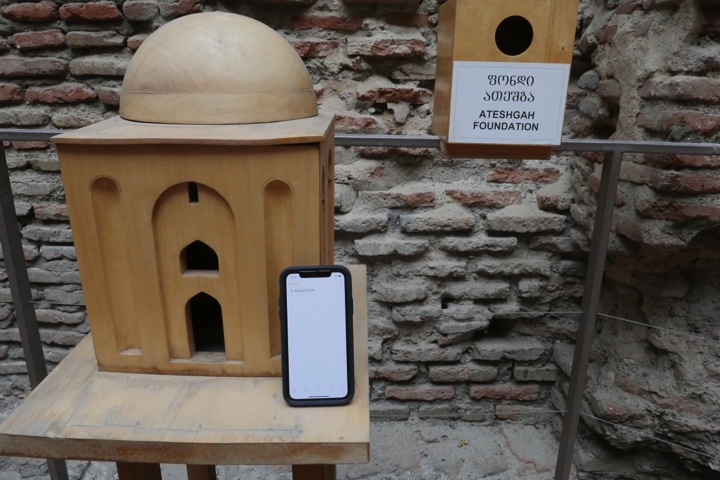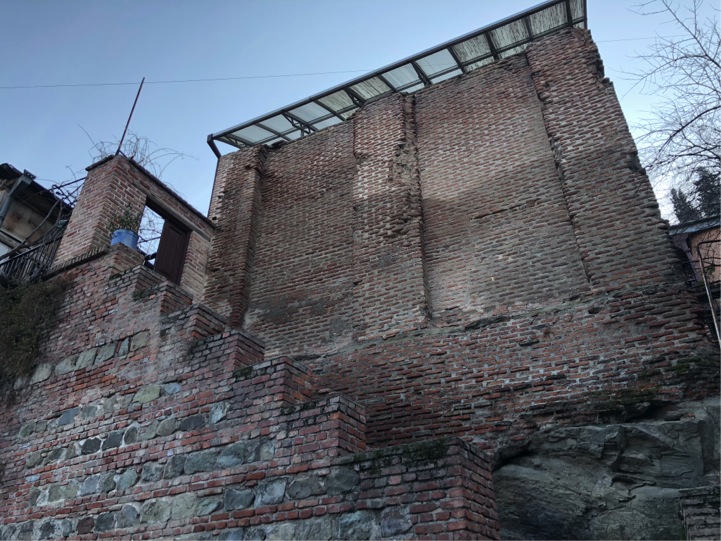The photos of the Zoroastrian fire temple or Atashgah of Tbilisi in Georgia were provided to www.KavehFarrokh.com in late 2017 by Dr. Nadir Gohari of Durham University, who is an avid researcher and scholar of Iranian Studies.

Panoramic view of the interior of the Atashgah (Zoroastrian fire temple) of Tbilisi (Source: Dr. Nadir Gohari, 2017).
Georgia, like ancient Albania (known as Republic of Azerbaijan since May 27, 1918) and Armenia have stood at the crossroads between Anatolia, the civilizations of ancient Persia or Iran and Eastern Europe.
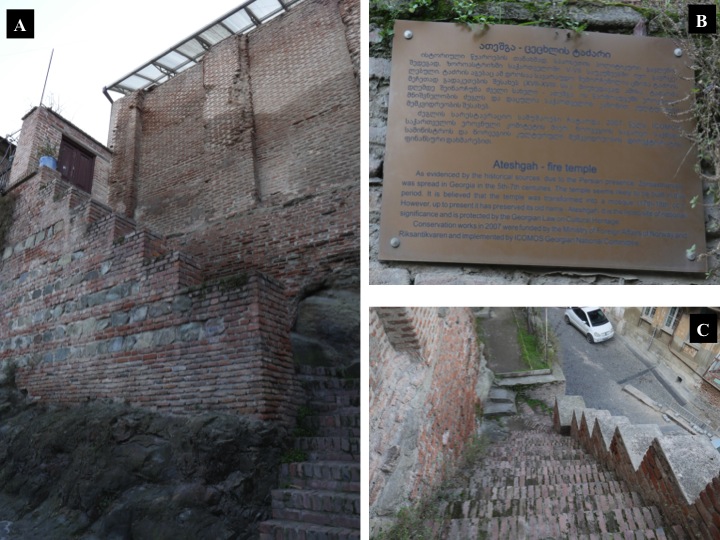
Alongside the impact of the major Abrahamic religions (Judaism, Christianity and Islam), the Caucasus continues to bear a strong ancient Iranian imprint as witnessed for example by the Kurdish Yezidis who live in both Georgia and Armenia to this day. Concave structure at one of the top corners of the Atashgah (Zoroastrian fire temple) of Tbilisi (Source: Dr. Nadir Gohari, 2017). As noted by the late British historian Mark Whittow (1957-2017) who taught as a professor at Oxford University: “The oldest outside influence in Trans-Caucasia is that of Persia…many of its populations, including Armenians and Georgians, as well as Persians and Kurds, the Transcaucasus had much closer ties with the former Sassanian world to its south and east than with the world to the west” [1996, pages 203-204; Whittow, M. (1996). The Making of Byzantium: 600-1025. Berkley: University of California Press]. Despite the conversion of Georgia to Christianity in the 4th century CE, Zoroastrianism continued to endure in local culture of the region. Officially, it was King Mirian (Persian: Mehran) who converted to Christianity in 337 CE. Despite this, the name “Ohrmazd” (Ahura Mazda) continued to be invoked by the local peasantry who referred to their deity as “Armazi”. Platform providing access into the the interior of the Atashgah (Zoroastrian fire temple) of Tbilisi (Source: Dr. Nadir Gohari, 2017). The Locals of ancient Georgia are believed to have provided offerings to Aramzi or Ohrmazd in a locale in close proximity to what is identified as “Bridge of the Magi” (Lang, 1956, pages 22-23; “St. Nino and the Conversion of Georgia,” Lives and Legends of the Georgian Saints, translated by D.M. Lang (1956), London: Allen & Unwin). Mock-up view of the interior of the Atashgah (Zoroastrian fire temple) of Tbilisi (Source: Dr. Nadir Gohari, 2017).